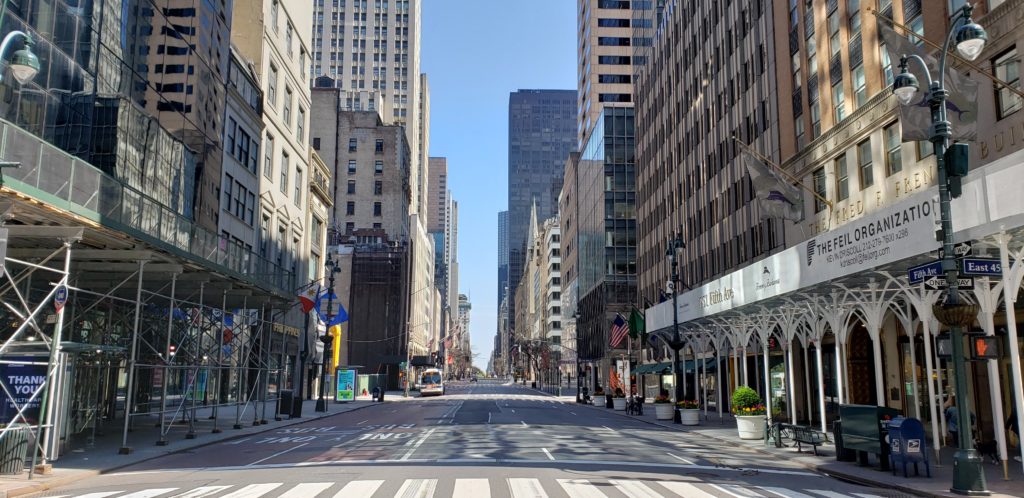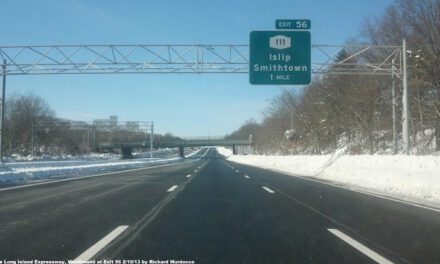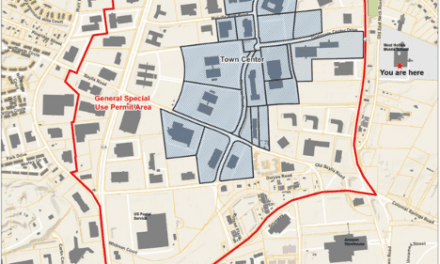The following was originally published by Inside Sources on July 8th, 2020. The piece was nationally syndicated in media outlets across the US. You can read the original here.
By Richard Murdocco
As the pandemic emptied out our nation’s central cities by relegating workers to the confines of home offices rather than gleaming towers of glass and steel, those within the policymaking and real estate realms began to ask seriously, “Will cities come back?”
If history gives any insight, the answer is clear — of course they will. The broader, more important question is how.
In New York, home to a metropolis that bore witness in the past to colonial unrest, draft and race riots during the Civil War, fiscal insolvency in the 1970s, and acts of terrorism at both the end of the 20th century and dawn of the 21st, both the city and surrounding suburban counties have rebuilt themselves time and time again.
A quick walk around downtown Manhattan during the post-9/11 years showcases the vibrancy and resiliency of our urban centers — a lesson many too quickly forget when things get rocky.
Instead of focusing on snappy headlines and quick punditry, the better question that should be addressed collectively is not IF cities are coming back, but how stakeholders can best work with policymakers, local civic leaders and residents to ensure that our communities are made even more economically resilient than before.

Pictured: Fifth Avenue at East 45th Street in Manhattan sat nearly deserted during the height of the coronavirus pandemic in April 2020. (Photo Credit – Richard Murdocco/The Foggiest Idea)
Reshaping our landscape to meet this historic moment is especially necessary in less-dense areas, which were already grasping in the relative dark on the best way to move forward.
Throughout suburban counties, local elected officials continually struggle with how to contend with declining sales tax receipts, which fuel most of their municipal spending, and the delicate question of how to balance creating economic prosperity while simultaneously maintaining the quality-of-life factors that locals prize.
Solutions presented don’t have to be mutually exclusive.
With the right mix of public input, builder expertise, and the application of oft-forgotten urban planning principles, it is possible for the coronavirus pandemic to serve as a launching point in reshaping the urban form in ways that are both financially and environmentally sustainable.
However, just because it’s possible, doesn’t mean taking such actions would be easy. It will take a unified effort across all levels of government to overcome the very real partisan and fiscal hurdles our cities and their environs face.
Due to the coronavirus, cities and local municipalities are now mired in dire financial shortfalls. Within the New York region, officials say that the city itself is facing a staggering $9 billion in losses, leading policymakers to consider a move reminiscent of the graffiti-stained 1970’s — municipal borrowing.
On Long Island, the numbers are just as dire. Nassau County, ironically one of the country’s wealthiest and highest-taxed localities per-capita, faces a $384 million gap, while Suffolk County is staring down a $589 million hole that is missing from their coffers. All of these losses are virus-related, local officials say.
As such, it’s critically important that Congress immediately act to give localities the funding they need to get back on their feet in the short term. But it won’t be enough. The coronavirus crisis has amplified already-present weaknesses in the composition of our cities.
Of all the terrible impacts of COVID-19, the silver lining is that we now understand how antiquated the suburban/urban relationship is, and are beginning to see opportunities to adjust the dynamic to a post-pandemic 21st century.
To help sustain economic growth in the years ahead, the federal government must take charge by working at the state and local level to inject these hard-hit regional economies with the large-scale public works and infrastructural spending that serve as a solid foundation for future prosperity.
We’ve done this as a nation before, and despite facing a multitude of crises in the present-day, we remain well-positioned to do so again.
Governmental intervention, when properly channeled and regulated by a strong legislative branch, can work to this end. Much of the infrastructure that shouldered the growth of New York was built during the throes of the Great Depression and under the nuclear veil of the Cold War.
In more modern times, we’re witnessing in real time evidence emerging that the federal Paycheck Protection Program has had a tangible effect on buttressing the economy, despite the initial rocky roll-out and inequitable distributions. Imagine for a moment how much more effect the program would’ve done if things ran smoother.
In the end, the formula for success comes down to political will, civic open-mindedness, and a spirit of unity that our nation hasn’t seen in years.
As American cities pick themselves up, we face two choices — seize the unique moment we’re living in and thrust forward — or regulate ourselves to simply treading water, trying not to have our collective heads dip below the relentless tides of history.
Richard Murdocco is an adjunct professor of economic development and planning at Stony Brook University. He wrote this for InsideSources.com.













